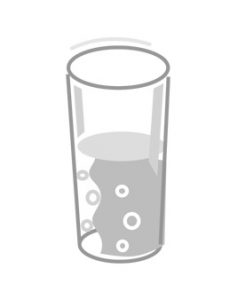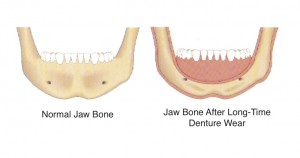Header logo
header top contact widget
Blog Archives
Recent Posts
Categories
Archives
- September 2024
- August 2024
- July 2024
- June 2024
- May 2024
- April 2024
- March 2024
- February 2024
- January 2024
- December 2023
- November 2023
- October 2023
- September 2023
- August 2023
- July 2023
- June 2023
- May 2023
- April 2023
- March 2023
- February 2023
- January 2023
- December 2022
- November 2022
- October 2022
- September 2022
- August 2022
- July 2022
- June 2022
- May 2022
- April 2022
- March 2022
- February 2022
- January 2022
- December 2021
- November 2021
- October 2021
- September 2021
- August 2021
- July 2021
- June 2021
- May 2021
- April 2021
- March 2021
- February 2021
- January 2021
- December 2020
- November 2020
- October 2020
- September 2020
- August 2020
- July 2020
- June 2020
- May 2020
- April 2020
- March 2020
- February 2020
- January 2020
- December 2019
- November 2019
- October 2019
- September 2019
- August 2019
- July 2019
- June 2019
- May 2019
- April 2019
- March 2019
- February 2019
- January 2019
- December 2018
- November 2018
- October 2018
- September 2018
- August 2018
- July 2018
- June 2018
- May 2018
- April 2018
- March 2018
- February 2018
- January 2018
- December 2017
- November 2017
- October 2017
- September 2017
- August 2017
- July 2017
- June 2017
- May 2017
- April 2017
- March 2017
- February 2017
- January 2017
- December 2016
- November 2016
- October 2016
- September 2016
- August 2016
- July 2016
- June 2016
- May 2016
- April 2016
- March 2016
- February 2016
- January 2016
- December 2015
- November 2015
- October 2015
- September 2015
- August 2015
- July 2015
- June 2015
- May 2015
- April 2015
- March 2015
- February 2015
- January 2015
- December 2014
- November 2014
- October 2014
- September 2014
- August 2014
- July 2014
- June 2014
- May 2014
- April 2014
- March 2014
- February 2014
- January 2014
- December 2013
- November 2013
- October 2013
- September 2013
- August 2013
- July 2013
- June 2013
- May 2013
- April 2013
- March 2013
- February 2013
- January 2013
- December 2012
- November 2012
- October 2012
- September 2012
- August 2012
- July 2012
- June 2012
A Dry Mouth Is An Open Door To Oral Bacteria.
Posted on Dec 19, 2017 by William J. Claiborne, DDS MS
Several decades ago, Americans were advised to drink between 6-8 glasses of water per day. I must admit, when I first heard the recommendation I thought, “That’s not only a tremendous amount of water, I’ll be making bathroom stops all day!”
Although the bathroom issue was not as much of a problem as I felt it would be, drinking 6-8 glasses of water daily actually turned out to be easier than I originally felt. Now that I’m in the habit of it, I am more conscious of a ‘parched’ feeling when I fall short of that amount.
By nature, our mouths are designed to be a moist environment. The tissues in our mouths are kept moist by saliva flow. When saliva is flowing at a healthy level, the oral tissues are moist and bacteria-causing food particles move through the ‘oral cavity’ on a continual basis, keeping the mouth rinsed.
For your body to function properly, water is a dire need. You need water for proper
• Circulation
• Metabolism
• Body temperature
• Waste removal & detoxification
Hunger or sugar cravings are often signs of being dehydrated. Other signs are bad breath, headaches, mood swings, fatigue, chills, muscle or joint aches, constipation or dry skin.
Interferences can occur with saliva flow, and there are many. These include the side effects of prescription and over-the-counter medications as well as herbal supplements that contribute to oral dryness.
Oral dryness can also occur with health conditions such as sinus infections, mouth breathing (including snoring), Alzheimer’s disease, diabetes, anemia, cystic fibrosis, rheumatoid arthritis, hypertension, Parkinson’s disease, stroke and is a normal part of the aging process.
Often, what we drink can actually worsen oral dryness. Caffeinated beverages such as coffee, tea and colas are drying to the mouth as are beverages containing alcohol (including beer and wine).
For most of us, it is wise to supplement oral moisture with drinking plenty of water. Begin with a glass of water when you first awaken. It is normal to be somewhat dehydrated after a full night’s sleep so drinking water the first 15-30 minutes you’re awake helps your entire body re-hydrate, and especially your mouth.
Try to always have a glass of water near you. When you will be away from home or your desk at work, carry bottled water with you. Try to consume two glasses of water between breakfast and lunch and another with lunch. After lunch, drink another 1-2 glasses before dinner and a glass after dinner.
The color of your urine is an indication of whether you are drinking a sufficient amount of water. Urine that is nearly clear is ideal, meaning you are providing your body with ample water to keep it properly flushed. As urine becomes more yellow or even brown (an indication of dangerous dehydration), it should be a warning sign that you need to drink more.
Once you’re in the habit of drinking water on a regular basis, you’ll start to notice the moist feeling in your mouth. The tissues in the mouth will not only feel more comfortable, your oral health will improve as oral bacteria are more efficiently moved out of the mouth.
Pure, filtered water is best. Avoid bottled waters that are flavored with sweeteners or chemical flavorings. If you want to add flavor to your water, add sliced strawberries or cucumbers.
If you feel a supplement is needed to replenish oral moisture, there are several good products specifically formulated for this, which are available over-the-counter. These are used similar to a mouth wash and can support you in having a healthier mouth.
Why Dental Implants Are Excellent Investment
Posted on Dec 13, 2017 by William J. Claiborne, DDS MS
Some things aren’t as clear as comparing apples to apples. For example, if you’ve ever purchased a piece of furniture that ‘looked’ well-built but was a bargain price, it doesn’t take long to realize it really wasn’t much of a bargain after all. The drawers may start to stick, it may begin to wobble or the surface may crack or loosen from the base. Eventually, your mind begins to calculate how much better that money could have been spent.
Of course, we all want to know that our money is being spent wisely. That means getting desirable results for a fair price. When people tell me that Dental Implants are too costly, I ask them what they are comparing them to. If they’re comparing them to a denture, partial or crown-&-bridge, consider these factors before making a final decision.
I begin by helping them to understand that missing teeth were once held by a sturdy foundation – the jaw bones. Natural tooth roots held by your upper or lower jaw provided a dependable, secure foundation for biting and chewing.
I then explain how the upper and lower jaw bones were nurtured by the presence of tooth roots, being stimulated to keep the bone at a healthy mass. Without their presence, the jaw bones experience ‘resorption,’ which causes the bones to decline in height and width.
Once resorption begins, remaining natural teeth in the area of bone loss are affected. A shrinking bone that abuts areas of resorption weakens tooth root stability. This creates a domino effect with statistics showing the next tooth to be lost will likely be a tooth adjacent to this area.
As bone loss continues, I discuss how the risk for additional tooth loss increases. With each extraction, the continued process of bone loss leaves you with an ever-shrinking jaw and thinner foundation for remaining natural teeth. Bone resorption becomes obvious in people who appear to have a collapsed mouth (referred to as a ‘granny look’) where the nose gets closer to the chin. Other signs are deep wrinkling around the mouth, jowls and having the corners of the mouth turn downward even in a smile.

Healthy Jaw Bone Vs Bone Loss From Missing Teeth
Bone loss is also the reason for dentures and partials that slip and cause uncomfortable rubbing on gum tissues. When a denture is first made, it is designed to wrap the unique contours of your gum ridge (the arch that once held natural tooth roots). As the bone shrinks, the once-secure fit loosens and eventually moves while eating. Although denture pastes or adhesives can help, even relines (reshaping the previously-made contours) offer little help as resorption continues.
When choosing Dental Implants to replace teeth, you are making a lifelong investment. Since implants are designed to last a lifetime, they provide a ‘one and done’ choice for dependable tooth replacement.
In cases where one or several teeth together are missing, crown-&-bridge combinations are often considered. However, crowns and bridges can require repairs and/or replacements over time. Crowned teeth may need root canals. Bridges can break. Too, when natural teeth are crowned for the sole purpose of supporting a bridge, the integrity of otherwise healthy, natural teeth has been forever compromised.
Because they are held in the jaw bone, Dental Implants do not rely on adjacent teeth for support. With the jaw bone for its foundation, implanted teeth have the same, dependable foundation as natural teeth once had. And, because the implanted portion recreates the presence of a tooth root, the process of resorption is halted.
As a Periodontist, I have specialized training in the diagnosis and placement of Dental Implants. As has always been my goal, I strive to provide each patient with the best outcome possible while enjoying a comfortable process from start to finish.
Begin with a private consultation to discuss your goals or concerns. Call 828-274-9440 to schedule.
Important Reasons Why You Need Healthy Gums
Posted on Dec 06, 2017 by William J. Claiborne, DDS MS
As responsible adults, we take certain precautions that help to keep us healthy. We use sun screen when we’re going to spend time in the sun. We wear appropriate shoes when hiking or jogging. We wear a helmet when biking or motorcycling. We assign a designated driver rather than drink and drive.
These actions help to protect us and hopefully prevent occurrences that may otherwise result in health problems. Certainly, it makes more sense to avoid problems in the first place rather than endure the time, expense and even disabling consequences of ignoring practical preventive measures.
Then, doesn’t it make sense that adults would be especially devoted to having good oral health?
The Centers For Disease Control & Prevention (CDC) reports that over 47 percent of American adults have some level of gum disease. This is astounding for a country as advanced as the U.S.
I believe one of the reasons the rates of periodontal disease are so high is largely based on a population that is unaware of the ramifications of gum disease. This, in addition to a high number who are unfamiliar with its symptoms.
Let’s look at just a few reasons to be highly-committed to achieving and maintaining good oral health.
• Periodontal disease is the nation’s leading cause of adult tooth loss. I believe it reaches such a state because people are not aware of the warning signs. For example, some people believe that seeing blood in the sink when brushing is a sign they’re doing a good job at tooth brushing. (It’s not.)
• Research has found that the bacteria of gum disease is linked to systemic inflammation. This is when the body’s immune system goes out of whack and can’t turn itself off. Symptoms of chronic inflammation are chronic pain, fatigue, obesity, memory loss and insomnia.
• The bacteria of gum disease doesn’t necessarily stay confined to the mouth. Through tears in weakened gum tissues, the oral bacteria of gum disease can enter the bloodstream. As it travels throughout the body, it can contribute to serious health risks, including heart disease, stroke, some cancers, preterm babies, impotency, arthritis and diabetes.
• Good gum health is the foundation for keeping your natural teeth healthy, and for a lifetime. Research has shown that people with their natural teeth live ten years longer, on average, than those who wear dentures. And, healthy teeth support the ability to eat a healthy diet and feel socially confident to smile and laugh.
A 2006 report by the the Centers for Disease Control and Prevention (CDC) stated “the baby boomer generation will be the first where the majority will maintain their natural teeth over their entire lifetime.”
It adds, “Over the past 10 years, the number of adults missing all their natural teeth has declined from 31 percent to 25 percent for those ages 60 years and older, and from 9 percent to 5 percent for those adults between 40 and 59 years. However, 5 percent means 1 out of 20 middle-aged adults are missing all their teeth.” (https://www.cdc.gov/oralhealth/basics/adult-oral-health/index.html)
It’s easy to enjoy good oral health. It takes just minutes for proper brushing twice daily and daily flossing so the overall health advantages of healthy gums can be enjoyed. It is also important to have 6-month dental cleanings and exams. These opportunities help to remove bacterial buildup between appointments, often preventing the need for more expensive and time-consuming treatment later.
Symptoms of gum disease include tender gums that bleed easily when brushing, persistent bad breath, swollen gums, gums that turn red in color (versus a healthy pink), and pus pockets that form on gum tissues. Without treatment, teeth will eventually loosen and may require removal.
Protect your smile AND your overall health by keeping your gums healthy. If you’ve delayed care or suspect you have gum disease, call us at 828-274-9440. We are a ‘lecture-free zone’ and respect each patient and his or her needs. We just want to help you enjoy the advantages of a healthy, confident smile!


